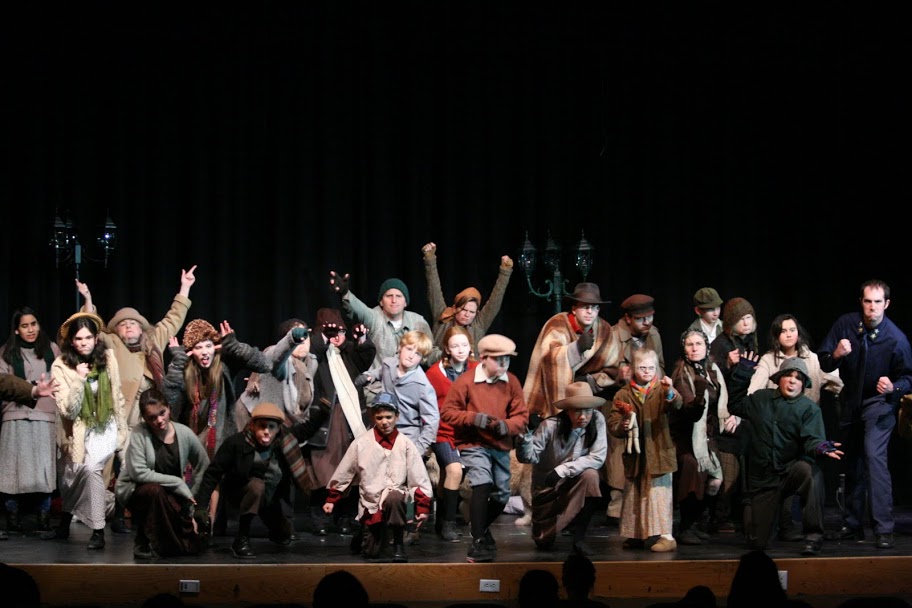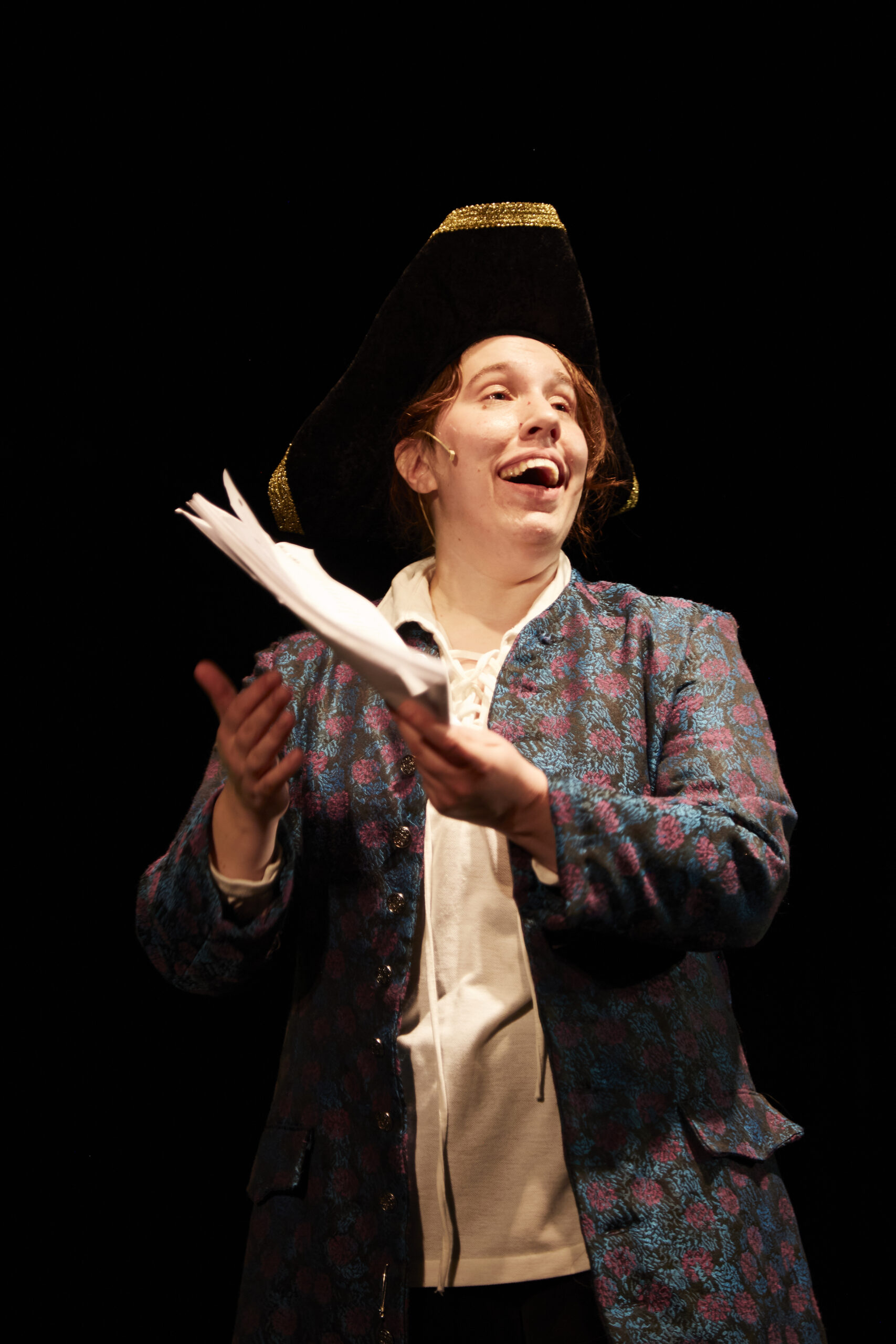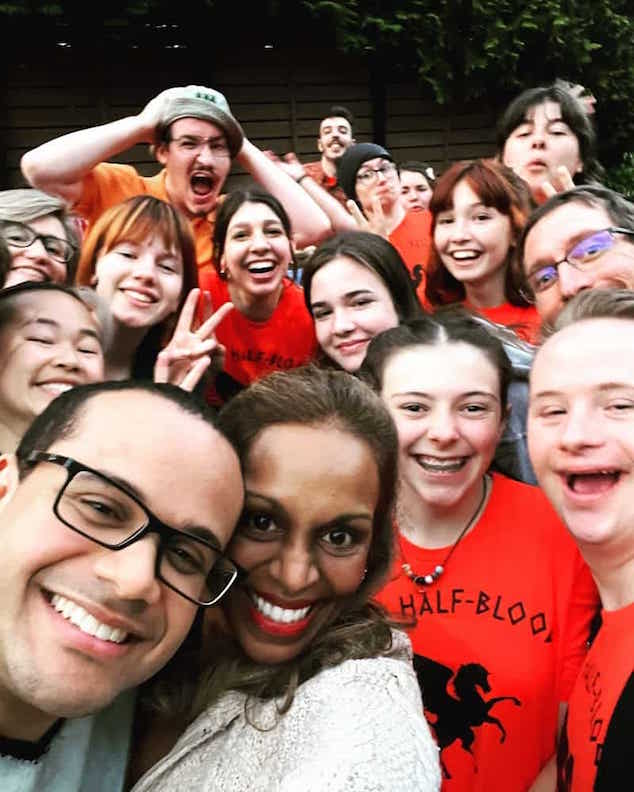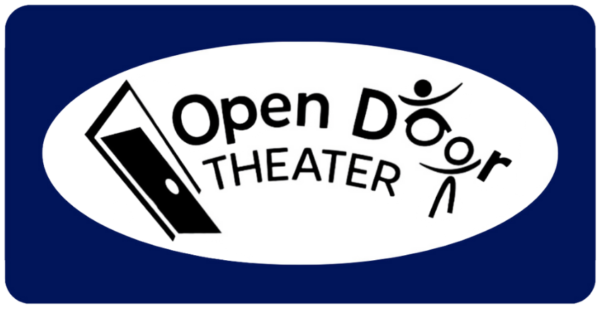
Featured in the Boston Globe in 2013, the diverse cast of Annie is dressed in tatters and layered in time period clothing as they mug grumpily with raised fists in their final song.
How it began…

Myla Haan as Patchy the Pirate resplendent in a purple brocade and 3 cornered hat, holding a sheaf of papers and joking with the audience.
Nancy Carroll had a vision where community theater had “open doors” for anyone, especially people not usually included in theater. While waiting at the school bus stop one day she shared that vision with a fellow parent, Penny Pitts, who just happened to be a puppeteer and civil rights activist. Penny immediately embraced Nancy’s idea and together they set off to make it happen.
Nancy and Penny’s first venture was a production of Oz. With money tight, they used what they had. Sets were made from used furniture boxes and since they had no storage space at the theater, the sets had to be transportable so they could be brought to and from every rehearsal and performance.
Keeping with their mission of an “open door” community, their life-sized puppets were constructed by residents in a Littleton nursing home and the sets were painted in Nancy’s basement by a social club for people with Disabilities, “Friday Night Fun Club”. These experiences solidified their vision of a theater community with an open door at its heart.
By their third show (Pinocchio), the troupe went ”on the road” taking a scaled-down and improvised version of Pinocchio to the Gates School in Acton and to the children’s unit of Metropolitan State Hospital (at the time a locked unit for children with mental illness). With a small cast and lots of parts, the troupe acted out the main plot, and when more characters were needed, they asked children in the audience to volunteer, bringing community theater to a locked ward of a psychiatric hospital.
Like any organization or family, over the years Open Door evolved and grew. So did interest in being in the show. More interest, in fact, than there were parts available so the concept of a “chorus” grew. Auditionees not selected to perform in the main show were invited to be in the chorus, which prepared one or two songs to be integrated into the show or as a pre-show; some years, cast numbers exceeded 100. This made Open Door a thriving community that was different, inclusive and unique. And the audience felt it. People came to the shows “to bring their kids” but left feeling like they had seen something special — a community on stage, a microcosm of what an integrated world should be.

The smiling and cheering cohort of Camp Halfblood actors in a tight selfie shot pre-show.
Over the course of our forty years, individuals have come and gone, but many came and stayed. There are families still involved with the Open Door today that have been involved for a decade or more. Adults whose kids were involved but have gone off to college still return to be a part of the Open Door family and some families are multi-generational in participation, having started as a child, now continuing with their children.
Open Door has grown from a 20-person cast in Oz to sometimes over 100 cast members. We may have more adaptive technology than our original counterparts and we excel at problem solving, but we are still here to celebrate community, quality family entertainment, and the founders goal of including young, old, disabled, experienced, and inexperienced people in community theater.
